We tried the Neato D10 robot vacuum cleaner to see how well it deals with allergens
Neato’s newest launch caters for large homes and the allergy prone
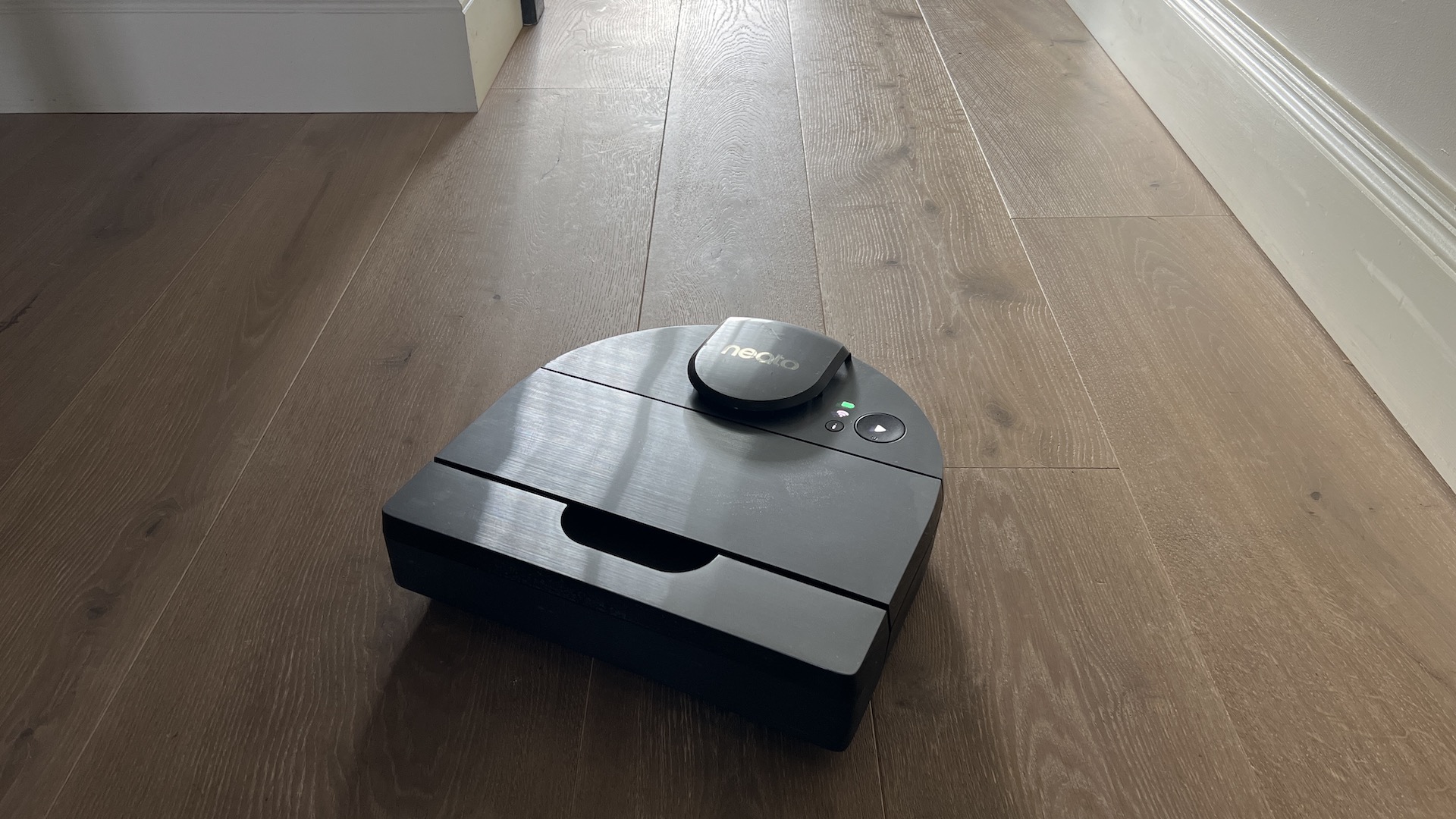
This meaty machine packs plenty of great features into its generously proportioned body, including microscopic dust extraction and exceptional battery life. It powers over thresholds like an all-terrain vehicle and automatically adjusts suction to suit different floor types. If only it was better at getting right into the edges and corners, we would happily donate our cordless vacuum to Oxfam.
-
+
Outstanding cleaning
-
+
Long run time
-
+
Removes allergens
-
-
Terrible at edges and corners
-
-
Poor build quality
- -
Why you can trust Ideal Home

Neato’s D10 robot vacuum cleaner is one of the biggest we’ve seen, with an impressive 28cm-long roller brush at its core. It is also one of the most efficient in terms of dust elimination, thanks to its HEPA filter that promises to capture 99.97% of allergens and fine dust particles as small as 0.3 microns. Allergy sufferers rejoice!
Based in sunny California, USA, this long-established brand has established a solid reputation for producing some of the best robot vacuums in the UK (and around the world). Neato currently has six robot vacuums in its portfolio, with the D10 tested here being the newest and most techie launch to date.
I was lucky enough to host the Neato D10 for a six-week period that included the busiest time in any household, Christmas and New Year. We have a huge extended family, the majority living close by, and there was a seemingly never-ending parade of relatives and friends traipsing in and out, many with their doggy pals. Plus, we have two hairy spaniels and two hairy children of our own to clean up after. In short, the D10 really had its work cut out keeping on top of our four-bedroom family home during the festive period and beyond. Find out how it got on.
Neato D10 robot vacuum
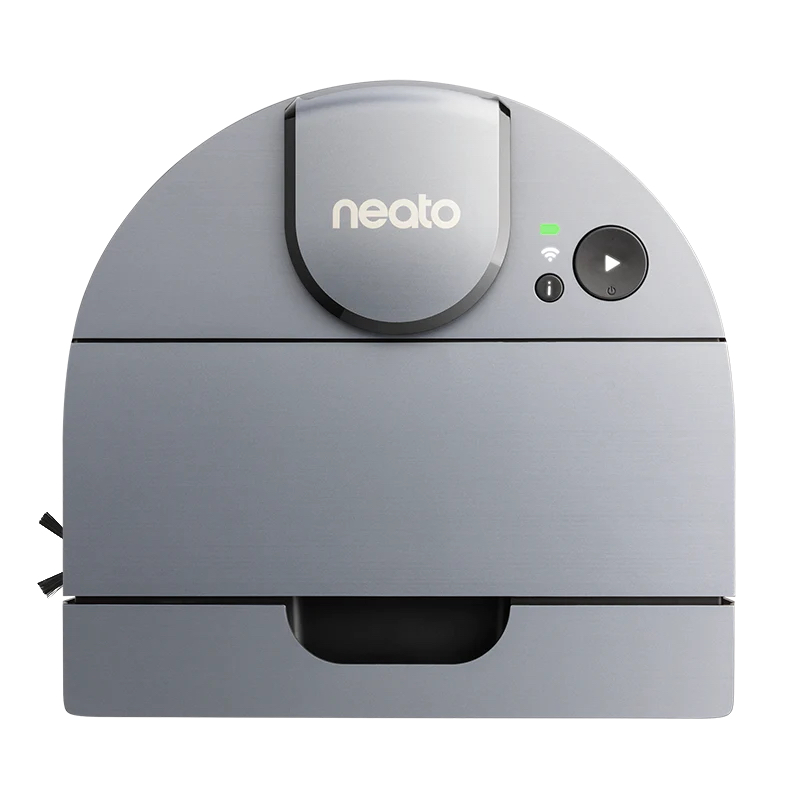
Product spec:
- Power source: Lithium-ion battery
- Dimensions: H3.99 x W13.22 x D12.71 inches/ H10.1 x W33.6 x D32.3cm
- Weight: 3.7kg
- Dustbin capacity: 24.6 oz / 0.7-litre
- Battery life: Up to 300 minutes
- Charging time: 4 hours
- Floor coverage: 250 sq m
- Power levels: 3
Who tested this robot vacuum?

Linda Clayton is a freelance interiors journalist specialising in kitchens, bathrooms and home tech. She is a serial renovator, currently on her fourth project, and has tested many home appliances, DIY tools, mowers and mattresses in the last 20+ years.
Who will the Neato D10 suit?
Aimed at larger homes, the 300-minute run time should easily dirt-bust up to 250sq m per charge. Allergy sufferers will also appreciate the substantial HEPA filter and effective dust collection.
How easy is the Neato D10 to set up?
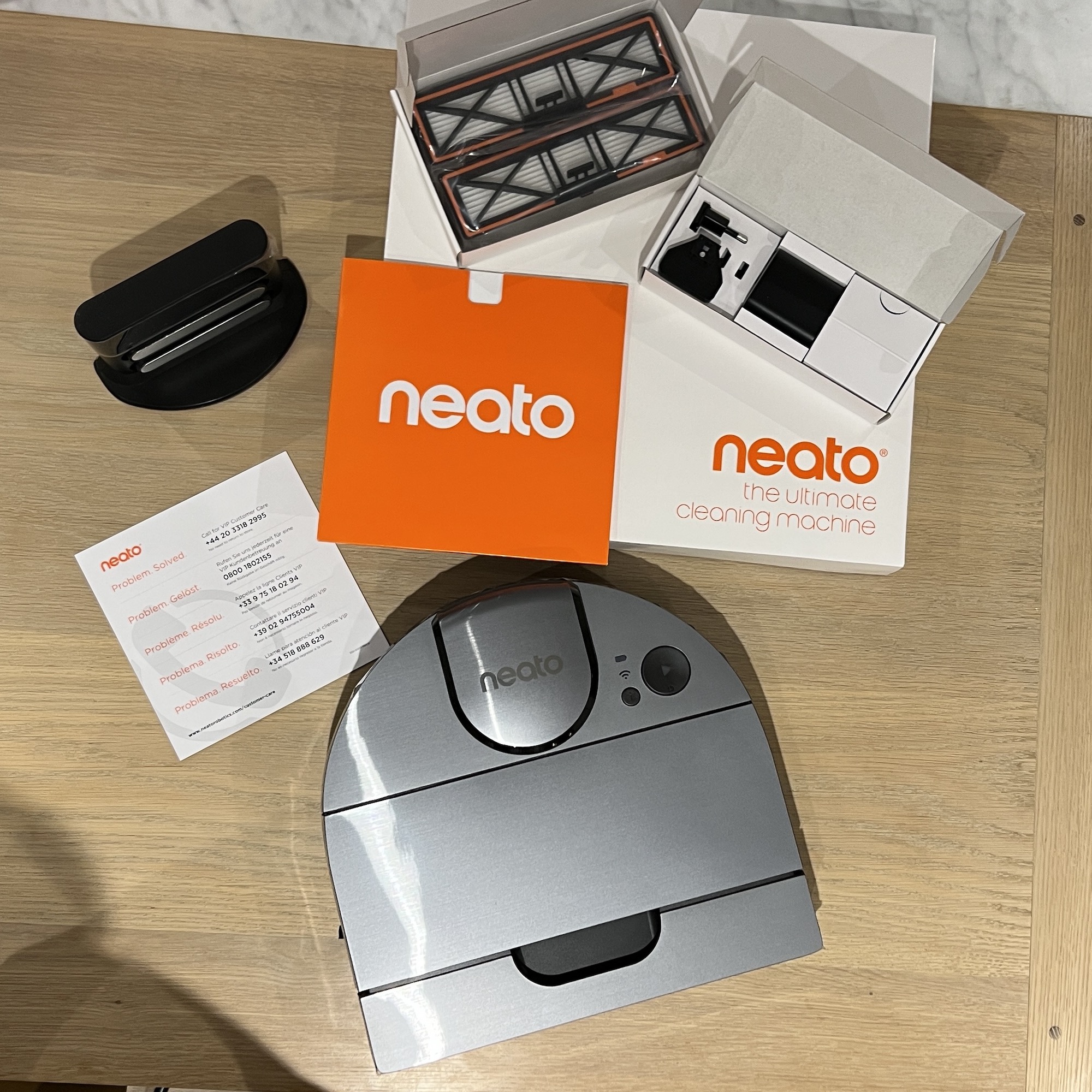
I must admit first impressions – in terms of build quality – were not great. Compared to other robots I have tested, the plastic components felt quite flimsy and wobbly. Sure, it looks nice enough and the silver finish is very smart but, as I found out later, it did scratch and scuff very easily. Plus, the front panel, the bumper, fell off a couple of times.
On a scale of 1-10, with one being child’s play and 10 being Mensa-grade, I’d give the Neato D10 around five when it comes to set up ease. It wasn’t hard but it wasn’t the simplest robot vacuum I’ve installed either. Positioning the charging base, which is nicely compact and unobtrusive, went smoothly. I like that there’s space to wind spare cable in the back, too. You need to allow 12 inches free floorspace around the charging station to enable redocking, which is the norm.
The issues I had were mostly App related. The MyNeato App didn’t want to recognise or connect with the vacuum and kept freezing. When it did finally connect, after about half an hour of reinstalling the App and generally turning things on and off again, I had to wait for a 15-minute software upgrade. On the plus side, the D10 arrived with plenty of charge, so once the machine was up-to-date, it could crack on with the cleaning.
On the top of the D10 is just one large Play button, plus an ‘i’ button which provides an audible status report when pressed. This means you do need to use the App to do anything beyond starting the device. Obviously the first thing I did was change the robot’s name to Colin. He looks like a Colin. Then I set him off on his maiden voyage.
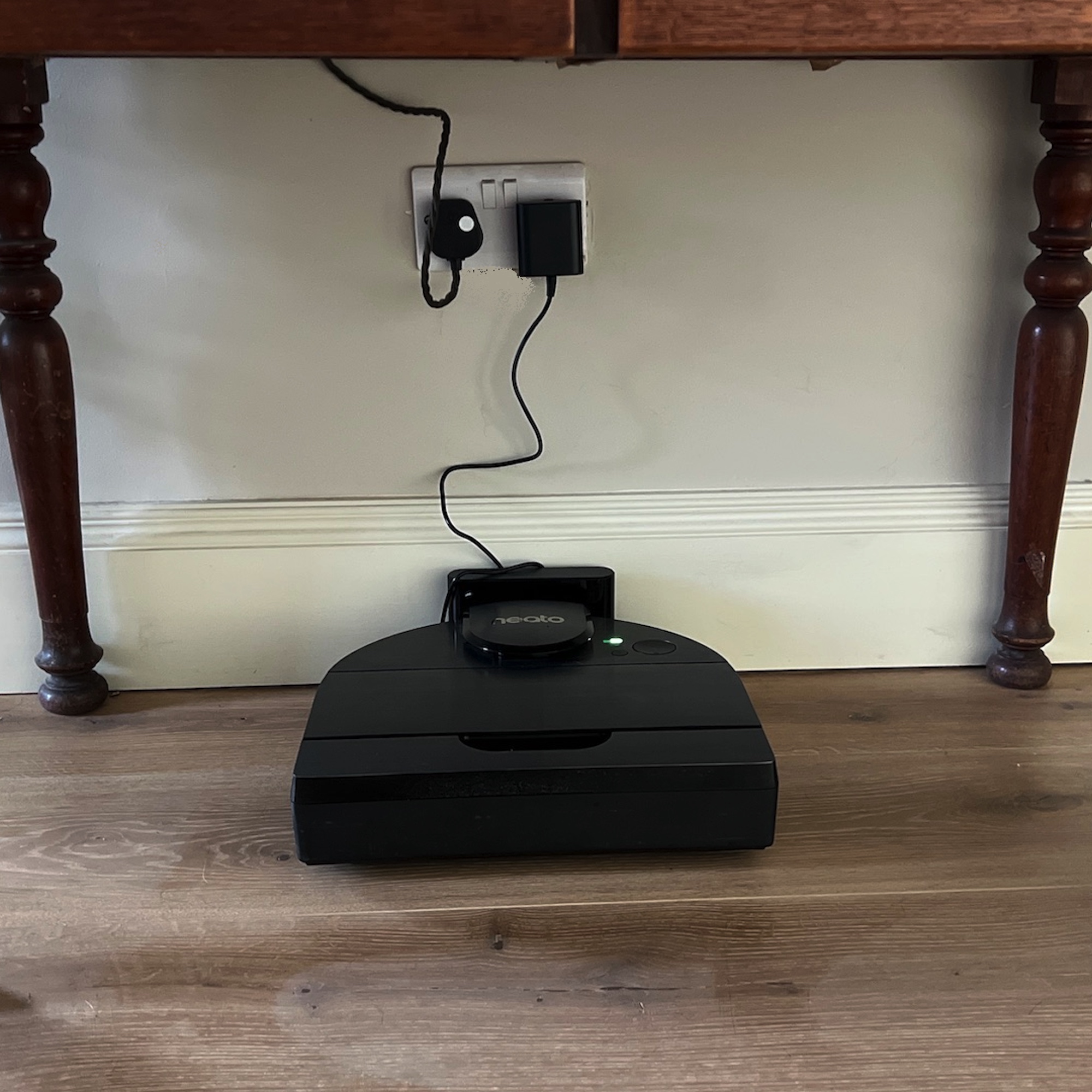
What is the Neato D10 like to use?
Like most robot vacuums, it took the D10 a little while to establish a map that looked anything like the six-room layout of our ground-floor (which totals a little under 130sq m). The App has a History section, which is a helpful record of progress. The first three cleaning attempts were aborted before completion, but by the fifth run, we had a recognisable map I could then split into zones.
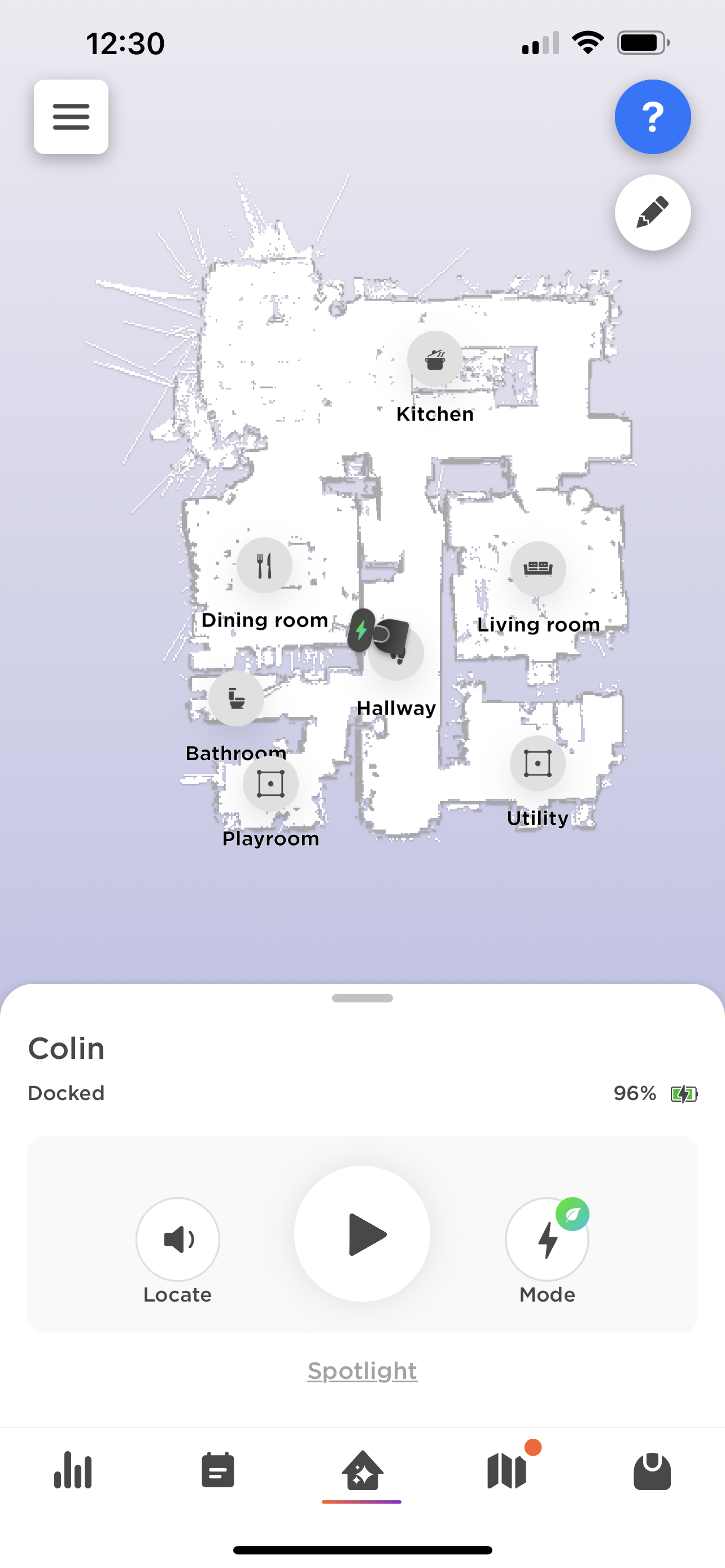
The benefit of creating zones is that you can name each room, and then send the robot off to do just one or two, rather than the full house every day. You can also create No-go zones, which is handy if there’s a rug, or entire room, with too many obstacles (such as kids’ toys perhaps) that prevents seamless cleaning!
At the time of reviewing, it wasn’t possible to create multiple maps but there was a message saying “Multiple maps coming soon” so hopefully that is on the horizon, as it will allow the D10 to do upstairs as well.
The D10 was pretty good at finding its way around the house, no doubt thanks to its built-in LIDAR technology, which, Wikipedia tells me, stands for laser imaging, detection and ranging. There were a few occasions that it couldn’t find the charging base, but since the cleaning was usually completed, I didn’t mind popping it home!
The clumsy way the Neato D10 navigates around, essentially crashing into walls and furniture like a teen-driven bumper car, leaves a lot to be desired on the noise front, especially if you’re working from home. It is also not the quietest running robot I’ve ever hosted, especially on hard flooring in Max power mode, where the D10 rated around 74dB on my sound meter, which is comparable to my washing machine on spin. The Eco mode read a more acceptable 60dB, which is similar to normal conversation.
In good news, the Neato D10 is excellent at navigating over thresholds, so if you have a small step between rooms, it won’t treat it like a wall! Not only did the D10 manage to avoid getting stranded on the recessed entrance mat in our hallway (which is set into a wooden frame that has thwarted robot vacuums costing twice the price) but it was the first I have ever tested that managed to get over the legs of our kitchen chairs. Such a happy revelation! In the past I have had to lift both chairs onto the sofa before setting a robot off. Not hard but tedious when you’re rushing to get the kids to school. Failure to lift inevitably ended with a ‘Robot stranded’ error message 10 minutes after leaving the house. The Neato just powered over them, not exactly effortlessly, but with impressive determination, cleaning in between the legs as it went.
Naturally, transitioning from rugs (even a very thick sheep fleece rug) to hard floors to carpet was a breeze for the D10. However, attempts to mount the 5cm-deep fireplace hearth in the living room ended in a distress message and cleaning fail, but it was easily sorted with a ‘No-go zone’ added to the Map.
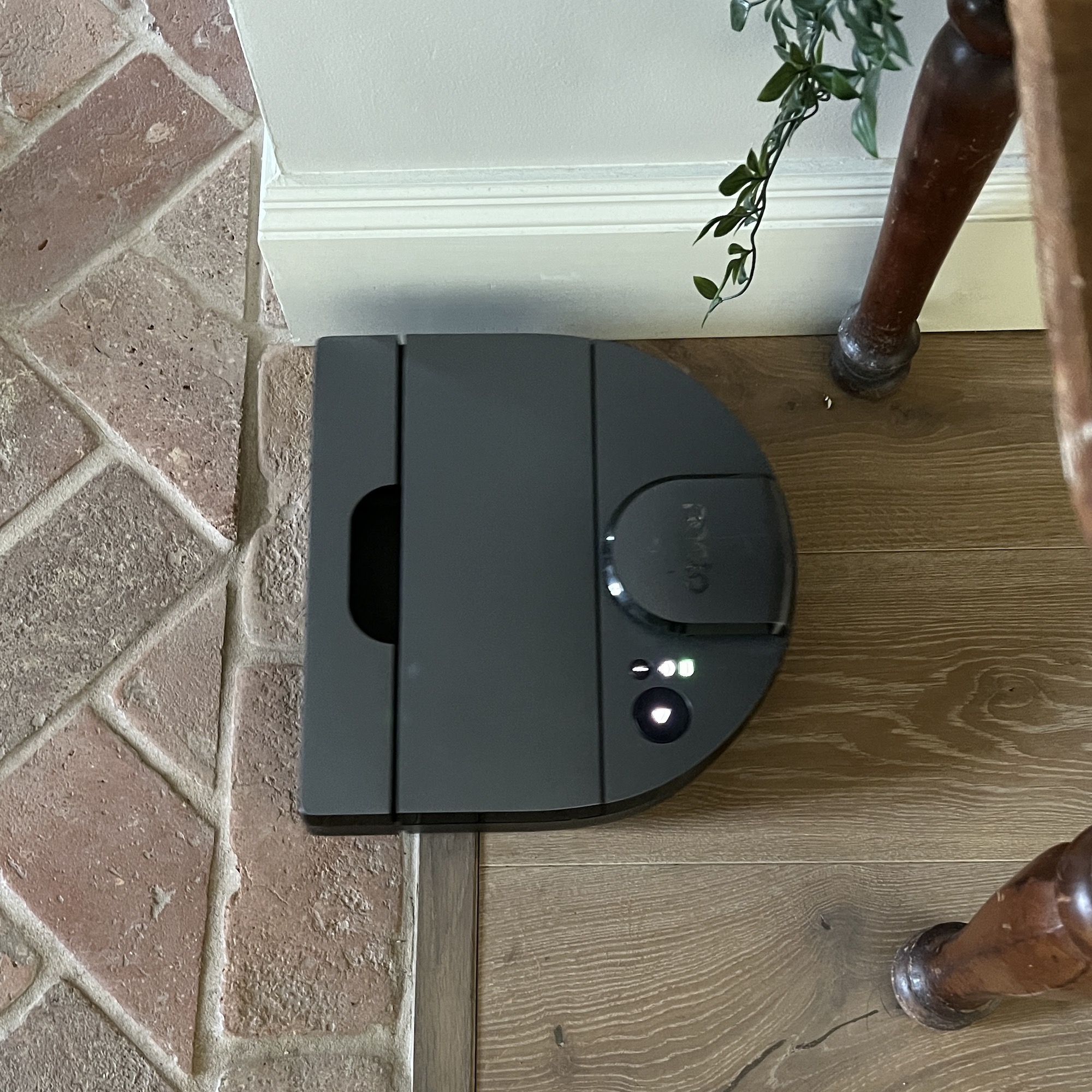
Which smart features are included and are they worth it?
The MyNeato App isn’t packed with features, but it does include scheduling, which is very handy for setting up cleaning when you’re not around. You can also alternate rooms, say the kitchen and hallway three days a week and other less busy rooms on others. Naturally you can set the vacuum going when you’re out of the house, too, but that does rely on the floor being clear of debris that may cause blockages, in my case this was mainly the dogs’ toys and towels, which they like to drag about the place 24/7!
Another Smart feature I rated was the Auto mode, which automatically switches the power level according to floor type. You often find this function on handheld vacuums but it’s less common on Robots. The main benefit is extended battery life, as the vacuum is only in Max Power when needed, for example on carpets or deep-pile rugs. Speaking of battery life, it’s worth noting that the 300 minutes Neato boasts about is on the lowest power setting. In Max mode, you’ll get more like 160 minutes, but that’s still very impressive. I mainly kept the D10 in Auto mode, and the longest it took to clean 95.8sq m was 3hr 9 mins, with battery life to spare.
Drop sensors prevent the D10 from falling down the stairs, so you can pop it upstairs for a spin safe in the knowledge it won’t end up at the bottom in a crumpled heap. I would have liked a spot cleaning function, so that I could send the D10 off to sort small spills, without having to do the whole room, but to be honest it’s just as easy and far quicker to grab the handheld. However, you can set up a Zone for high spill areas, like around the dining table or bar stools, which is similar to spot cleaning but not quite as quick to set up.
How good is the Neato D10 at cleaning?
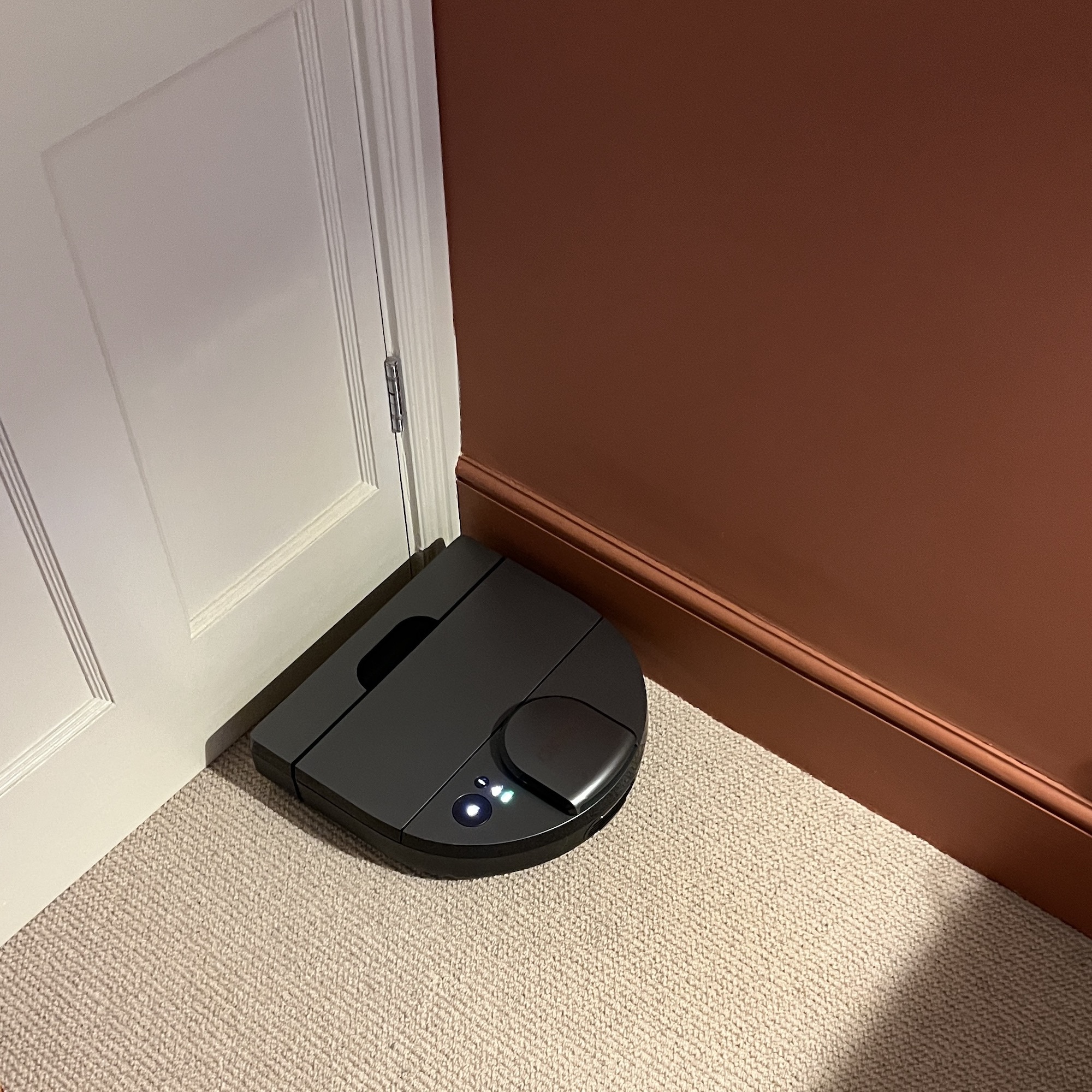
Neato claims to ‘lead the industry with 60% greater dirt pick up’, but this is only compared to its own earlier models, so not the most compelling statement. My favourite way to assess cleaning performance is far simpler, just look at the bin! I was frankly astounded by how full it was after the first clean, and a little embarrassed for the preceding Robot, which had done the rounds only the day before. It didn’t pick up quite as much in subsequent days, but it always delivered a noticeably bigger pay load upon emptying than any other Robot I’ve tested. So, on that completely unscientific test, the Neato D10 passed with flying colours.
The main brush is also the widest I’ve seen and is a combination of rubber flaps and brushes designed to cater for both hard floors and carpets. Brilliantly, it resists gathering trapped hair (and string and stray threads) exceptionally well, which is great news if you have a household of moulting heads, as I appear to.
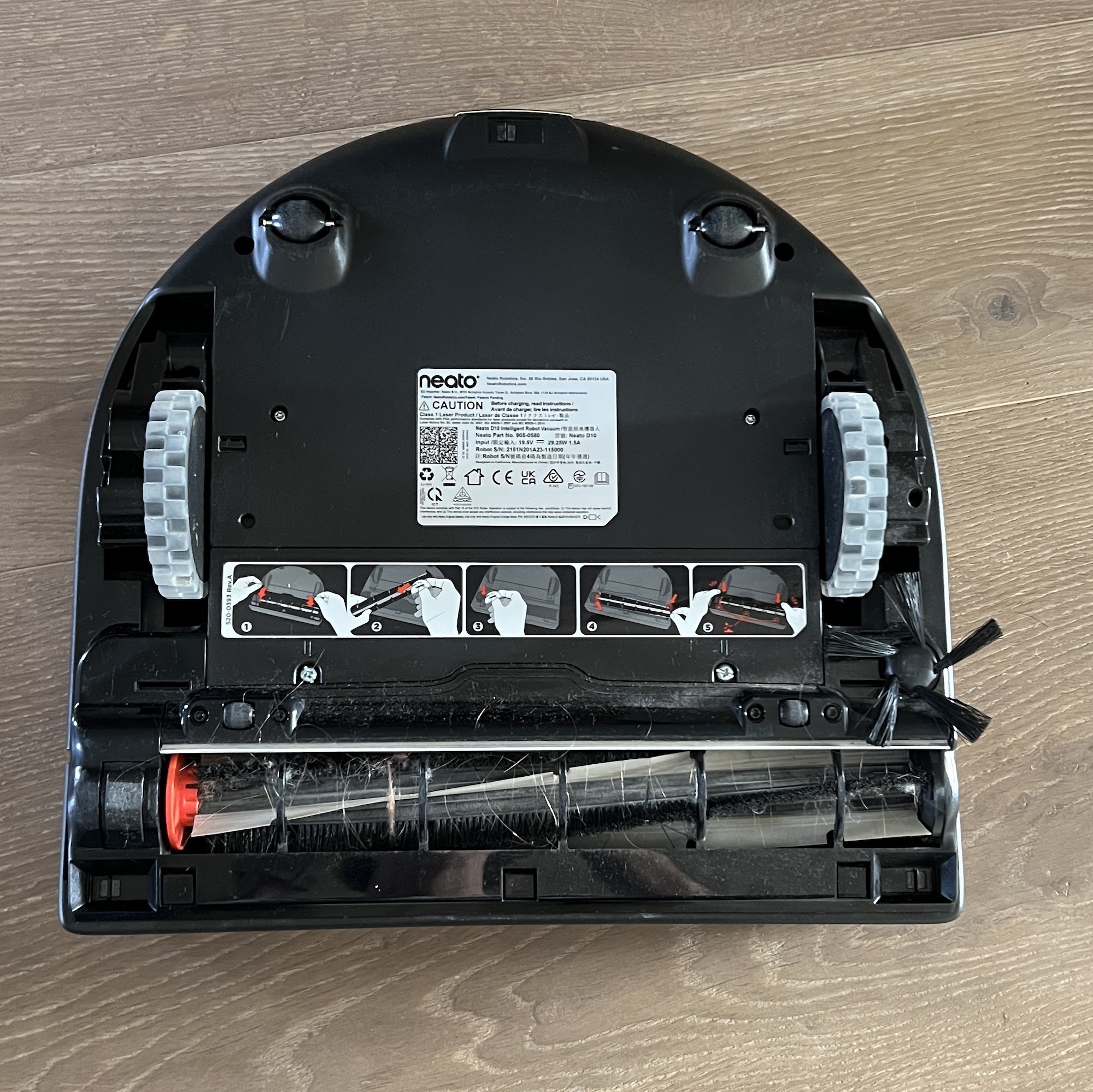
There are three power modes to choose from, Eco mode is the lowest and will give you maximum battery life, then there’s Turbo which is aimed at general vacuuming and Max for when you need ALL the power. As mentioned, I found Auto mode the most effective in terms of cleaning and also best for getting the most from the battery. Unfortunately, I couldn’t seem to switch between power modes while the Robot was cleaning, so if I set it running and realised the floors could use more power, I had to cancel the clean, send it back to base, and start again.
In other frustrating news, I didn’t find the Neato D10 very good at cleaning the edges of rooms, and especially into corners. Despite boasting about being the first Robot manufacturer to develop the D-shape design, specifically to get up close and personal with skirting boards and into corners, Neato’s D10 does not deliver. When you have two very hairy and very active spaniels, this is not good news. Yes, my floors looked beautifully clean at first glance and the bin contents was evidence that loads of dirt had been lifted, but closer inspection always revealed a sea of wispy hairs washed up along the edges of the rooms, like tide lines but less pretty.
To find out exactly how close to the corners/edges the D10 was getting, I created a 1.2sq m cleaning zone on the map, then lightly sprinkled the area with flour IRL and sent the D10 in. The photo below was after two cleaning runs, on Max power. Disappointing. I’m no design engineer, but I’d say the D10’s twirly corner brush is to blame (it’s bristles are not long enough), or perhaps the roller brush underneath is set too far back from the edges of the unit. Maybe it’s a combination of the two, but whatever the reason, leaving dirt behind is not brilliant for any robot vacuum, let alone one that costs more than £500.
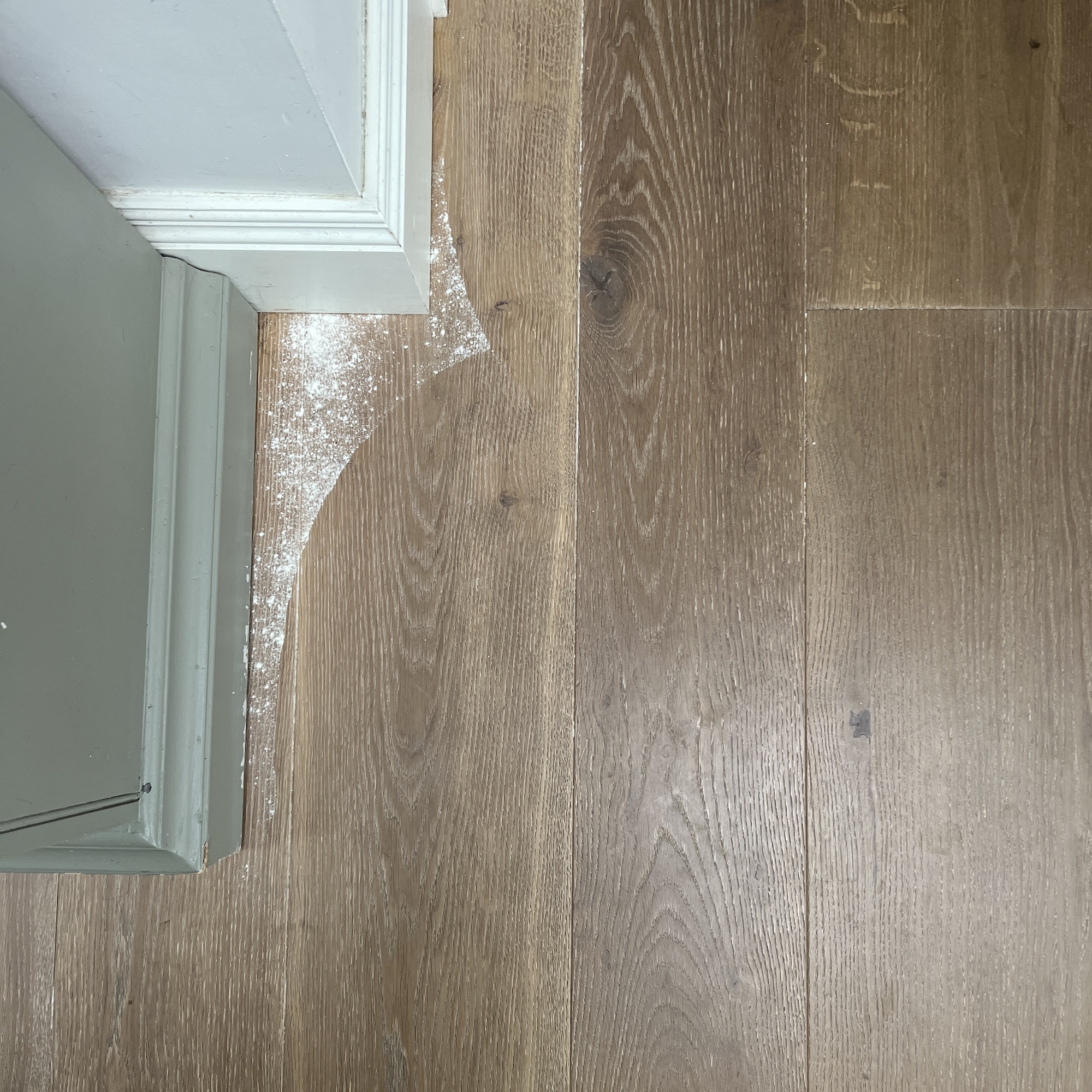
Is it easy to empty and maintain the Neato D10?
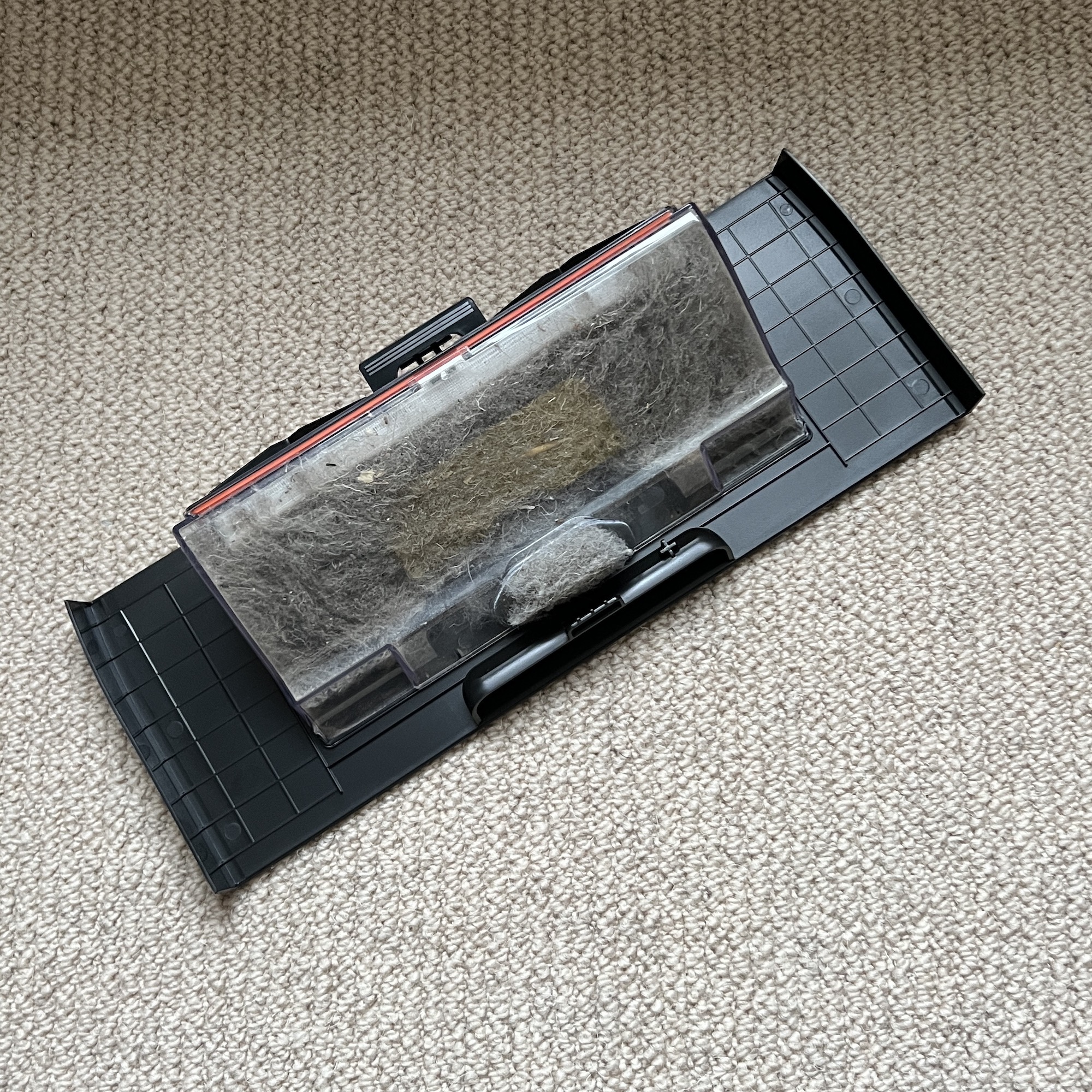
Back to good news, the Neato D10 is indeed easy to empty and maintain. The bin clips out from a panel on the top and then you unclip the filter, which is effectively the door to the bin, and empty the contents. Neato recommends emptying the bin and knocking the dirt out of the filter after every major clean, which I did, and it took seconds, making minimal mess. Unfortunately, the filter is not washable (with water), so has to be replaced every one-two months, depending on use. The D10 is supplied with two filters, and a pack of four new filters costs £24.10.
The roller brush doesn’t really get clogged up with hair etc, even after six weeks of testing there were only a few hairs wrapped around the very ends of the brush. To access it, I just had to remove the twirly brush (side brush), then press two clips and lift off the cover. It then pulled out easily. There’s a special cleaning tool located behind the charging base with a brush and cutter specifically for the job of detangling the brush.
Should you buy the Neato D10?
The Neato D10 is large, powerful and comes with a decent array of Smart features. Battery life is the best we’ve experienced, and the Auto cleaning function takes away even more of the cleaning strain, if that’s possible when talking about a product that does the job for you! The bin capacity is great, and its ability to fill it is exceptional. I’d recommend the Neato D10 for large, busy homes, provided it doesn’t have moulting pets in residence. I invariably had to run around the room’s perimeters with the cordless vacuum to sucker up the pet hairs (always those pesky pet hairs) and, frankly, that kinda sucked.
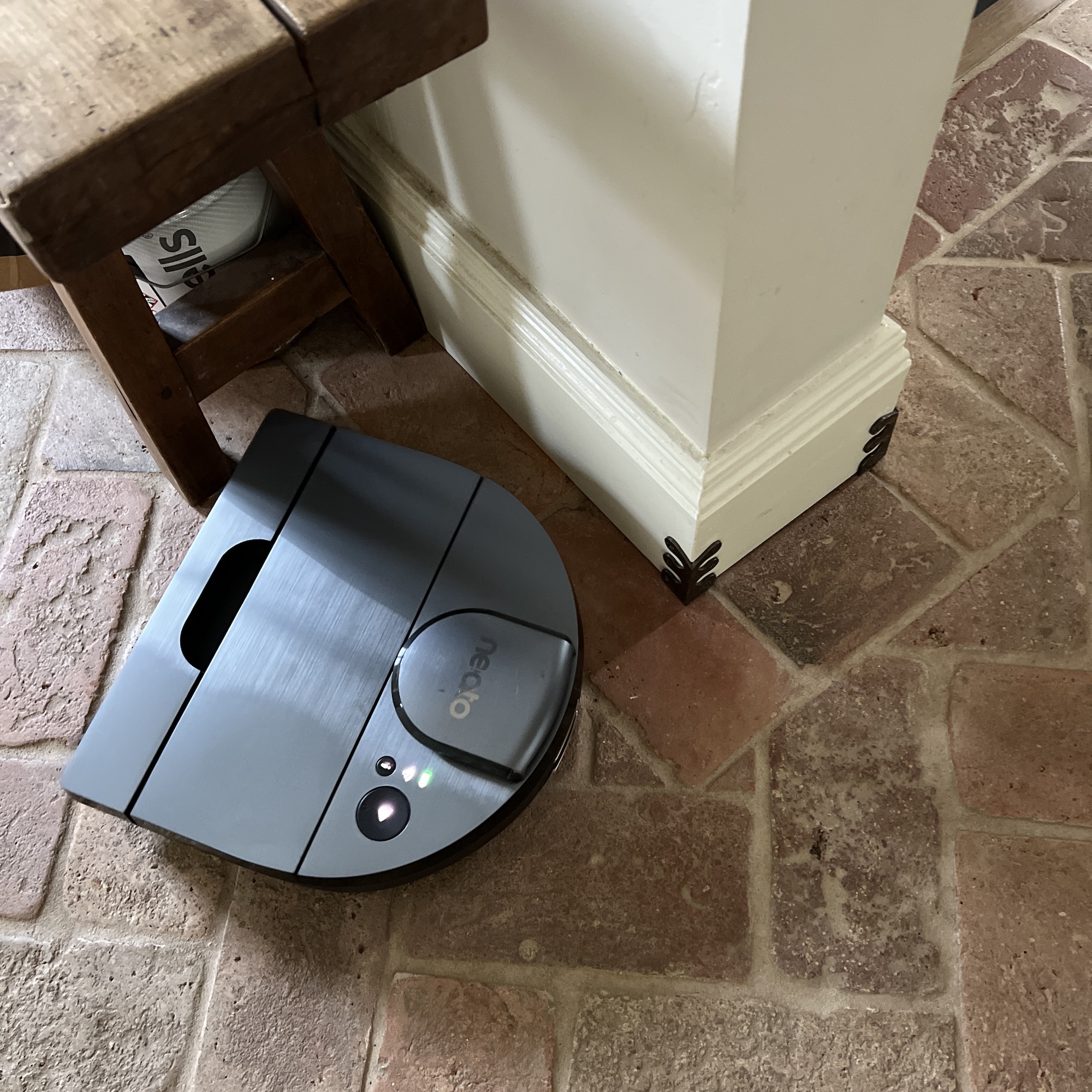
About this review, and the reviewer
Linda Clayton is a freelance interiors journalist specialising in kitchens, bathrooms and home tech. She is a serial renovator, currently on her fourth project, and has tested many home appliances, DIY tools, mowers and mattresses in the last 20+ years.
She was sent this product to test in a home setting for a month to find out how well it scores in a busy family home filled with (too many) pets and (just enough) children. The ground floor of her home is around 130sq m, split into six rooms, plus hallway, and includes every type of flooring imaginable – making it a great testing space for vacuums.
We were not given any compensation for this review but, for hygiene reasons, Neato does not require it to be returned.
Get the Ideal Home Newsletter
Sign up to our newsletter for style and decor inspiration, house makeovers, project advice and more.

Linda Clayton is a professionally trained journalist, and has specialised in product design, interiors and fitness for more than two decades. Linda has written for a wide range of publications, from the Daily Telegraph and Guardian to Homes & Gardens and Livingetc. She has been freelancing for Ideal Home Magazine since 2008, covering design trends, home makeovers, product reviews and much more.
-
 I’ve been looking for a new signature scent for my home and The White Company's new fragrance is the exact summer holiday smell I needed
I’ve been looking for a new signature scent for my home and The White Company's new fragrance is the exact summer holiday smell I neededSantorini smells fresh, summery and sophisticated
By Kezia Reynolds
-
 This £200 limited-time discount makes this Dyson vacuum cheaper than I’ve ever seen it - run don’t walk to Argos for this bargain
This £200 limited-time discount makes this Dyson vacuum cheaper than I’ve ever seen it - run don’t walk to Argos for this bargainIt's the most affordable Dyson on the market right now
By Lauren Bradbury
-
 Martin and Shirlie Kemp’s pastel flower beds have given their Victorian renovation a romantic look - how you can get the look
Martin and Shirlie Kemp’s pastel flower beds have given their Victorian renovation a romantic look - how you can get the lookTheir pastel garden is the cottage garden inspo you've been looking for
By Kezia Reynolds